How radios can create IoT networks
What is IoT?
IoT or Internet of Things is a collection of smart devices, sensors and appliances that have the ability to communicate through the internet.

Appliances can be made "smart"
An arrangement of devices connected to a network allows data to be collected and shared causing certain actions to be performed. For example, a sensor can alert you through your smartphone that the living room is too hot when you are not at home. You can set a program in your smartphone to turn the air conditioning on automatically or manually.
Why have we made an article on IoT?
Many articles on the internet describe IoT in very generalised concepts, but do not really touch on the radio aspects. In this article, we will examine how radio can help realise the construction of an IoT network.
The concept of IoT
The concept of IoT might not be easy to visualise at first, so we can look at an example. In this example, we have a sensor that senses a change in a physical quantity (such as temperature) and converts the change to an electrical signal. The sensor is connected to a control unit which converts the electrical signal to a value (such as degrees centigrade). Depending on the settings, the control unit can allow an action to be taken (such as turning the heater on). We can describe three methods to implement such a sensing system below:
Wired sensor
A sensor that is connected to the control unit by wires means only those sensor's readings will be seen by the control unit, for example, through its display. Because of the wires, often the sensor cannot be installed very far away from the control unit. The control unit may have extra terminals to connect more than one sensor unit but this will be limited by the hardware.

Sensor connected by wire
Wireless sensor
By incorporating radio into the sensor unit, the wires can be eliminated allowing the sensor to be installed anywhere so as long it is within radio range of the control unit. There is no need to install cables. Since the control unit can see all the sensor units, it is possible to obtain the value from each sensor individually e.g. by a request and polling method. More sensor units can be added and registered with the control unit if necessary.
Even if we have replaced the wires by radio, interaction is still limited to the user and the control unit itself. There is no method to control or read the values if you are not in that location.

Sensor connected by radio
IoT concept
The IoT concept takes it one step further by sending readings directly to the internet or cloud via a gateway (central hub). Now that the readings are available to view anywhere with a device that can connect to the internet, the user can monitor any sensor without being in that location. An action can even be initiated by the user and sent back through the cloud.
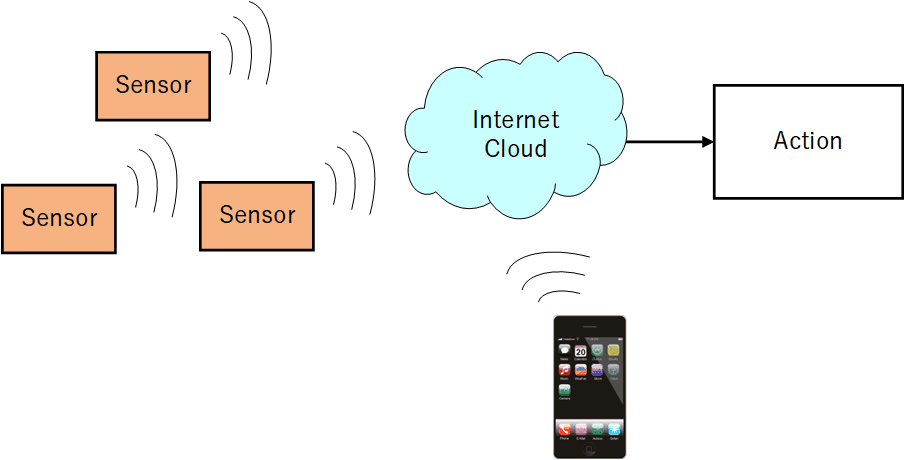
IoT
How does IoT make our lives better?
If we expand the IoT concept above, we can mention some examples:
Home
- A sensor could send an alert to your smartphone through the internet and tell you that your house is too hot. You can turn your air conditioning on through your smartphone before you come home. Or this can be done automatically through your own customised application.
- You are driving home and the smartphone app senses you are approaching your house. The app on the smartphone can send an instruction through the internet and the garage door opens automatically.
- Motion sensors in your house can send alerts if there is unauthorised access.
Hospital
- Patients can have their vitals monitored. The information can be sent through the internet and viewed by healthcare professionals.
- Hospital equipment can be tagged for inventory control.
Utilities
- Smart metering for gas, electricity etc. can send live readings so you can track your energy useage.
Industry
- Maintenance of industrial equipment. Instead of periodic replacements, smart sensors installed on equipment can detect overheating and wear and send alerts.
How RF engineering can be incorporated into IoT?
What is LPWA?
LPWAN (Low Power Wide Area Network) or simply LPWA is a network allowing low power (such as battery operation and low RF level) to cover a wide area.
Wide network
The word "wide" means "to cover a wide area", but LPWA does this by implementing a network with a number of accessible gateways. A gateway can be in charge of one or more sensors nearby.
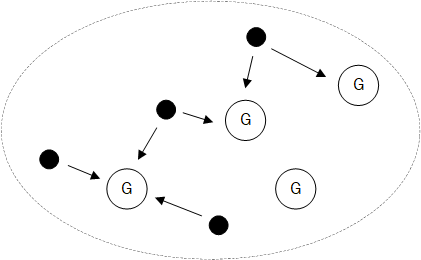
Gateways (G) can collect data from one or more sensors nearby.
Long range
Although we have defined "wide" to mean "wide area", we can expand the definition to also include long distance point to point communication. One method of extending distance is to use relay stations, but there are other methods.
To still be able to receive radio at lower power levels over a long distance, the sensitivity of the receiver must be made higher. Sophisticated methods such as LoRa allows increased sensitivity for reduced data rates. What makes LPWA good for IoT is that obtaining sensor readings often do not require huge data rates if the sensor collection is only performed periodically.
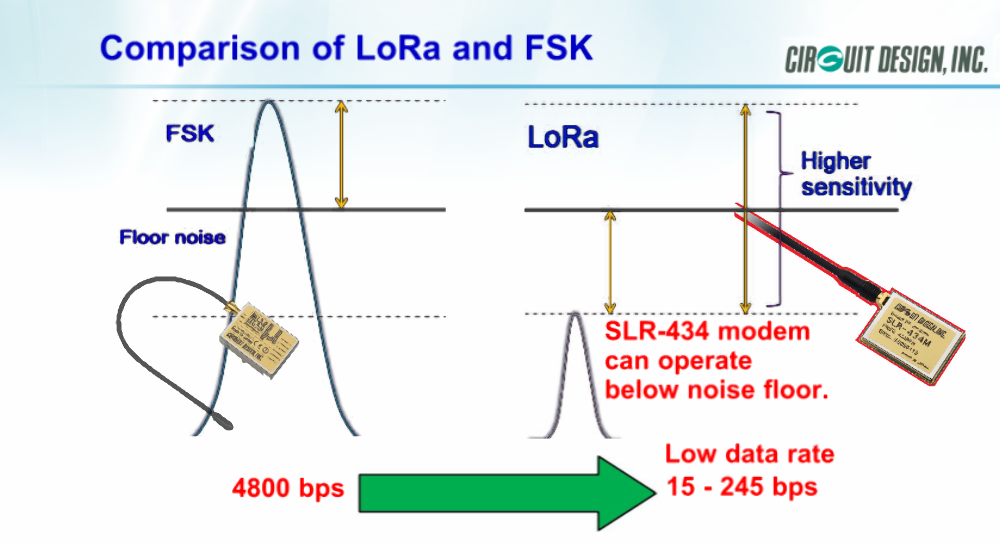
Lower data rate = Higher sensitivity
Better penetration
A higher sensitivity receiver using low frequencies which are not really stopped by solid materials can allow reception in difficult to reach areas, for example underground drainage systems.
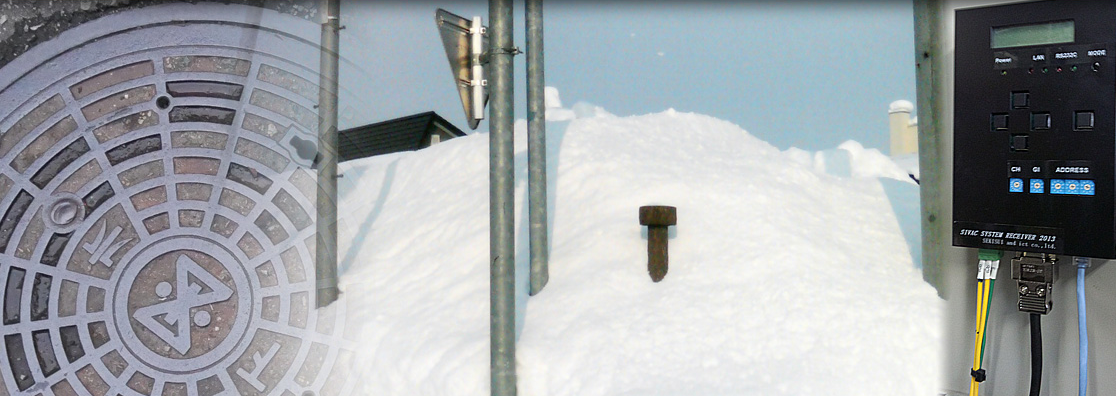
Remote monitoring of manhole pump
Sensing devices
Sensing devices incorporating a radio transmitter needs power to operate. It would be inconvenient to run power cables for this purpose, in particular where no source of power is available. Therefore, sensors would need to operate on a combination of solar and battery power.
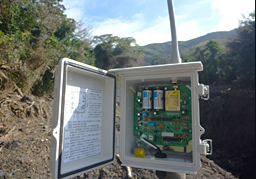
Remote Sensing unit
To minimise maintenance and battery replacement, sensors can operate on low RF power and during periods of no data collection, the transmitter can enter some kind of standby state. For example a sensor that is designed to send alerts may only need to sense a certain condition instead of performing data accquistion. A sensor for this would only need to detect an ON or OFF state and send this accordingly.
Customised sensors
A sensor could be generalised, meaning it has inputs (digital and analogue) and radio to transmit those input values serially. Such an interface can be realised through the use of a programmable board such as an Arduino. This would allow the user to connect a variety of transducers to the inputs as well as make a customised program or library.
 Using multiple sensors
Using multiple sensors
By using a polling and ID system, it is possible to acquire data from multiple sensors containing radio functionality.
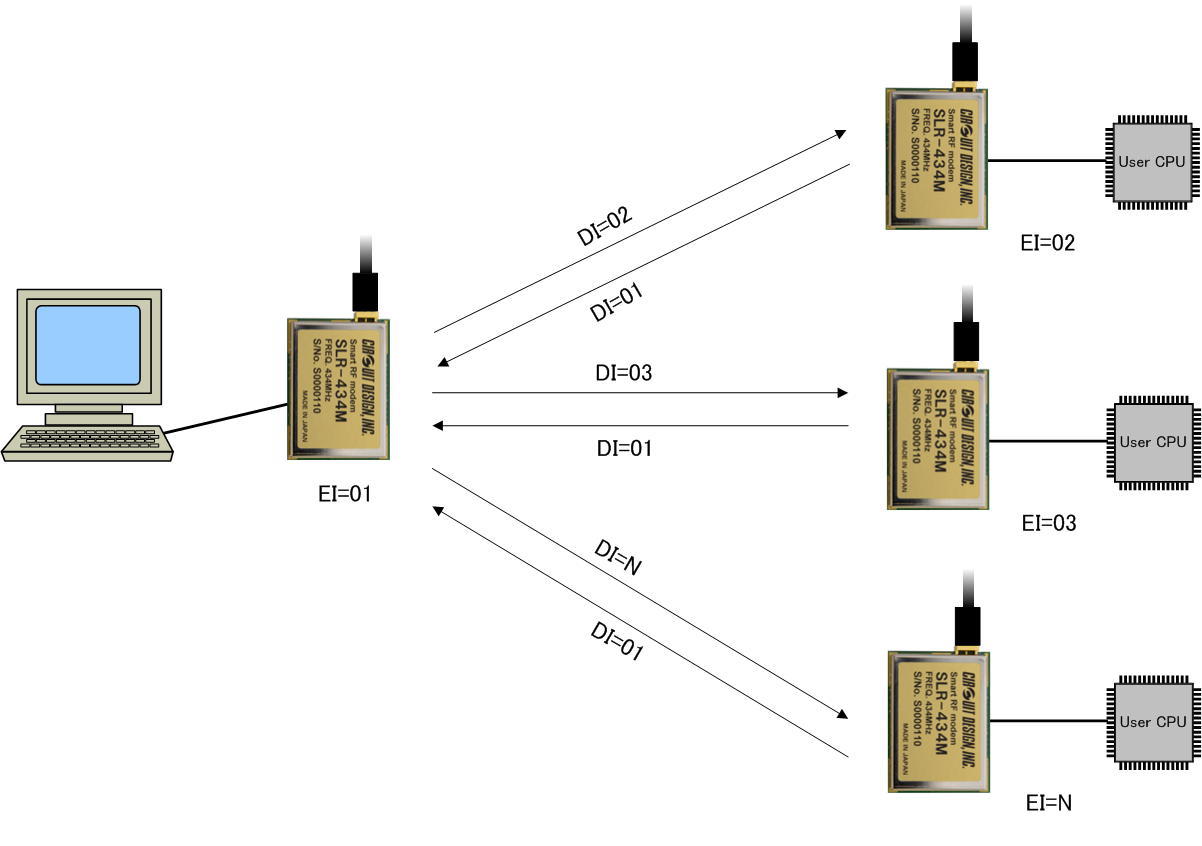
Acquiring data from multiple sensors
Frequency bands
The 2.4 GHz band is an ISM band that allows connectivity to WiFi. If the devices are in one area, interference risk is high which necessitates the use of spread spectrum technology such as Direct Sequence Spread Spectrum or Frequency Hopping Spread Spectrum.
For LPWA networks with several sensors, the process can be slowed considerably. For this reason, LPWA network operating frequencies are mainly found in the upper region of the sub-GHz band, e.g. 800/900 MHz. Licenced bands such as LTE allow higher data rates with less interference, however it cannot really cover a significant distance. It is more suitable for urban areas where the base stations are in a cellular arrangement.
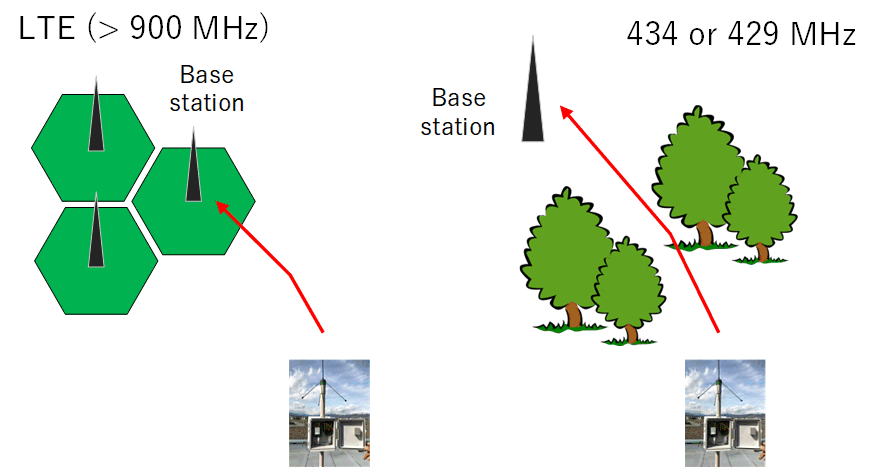
Using different frequency bands to base station
For minor cases, lower frequency bands such as the 434 and 429 MHz are good for penetration through countryside terrain where there is connectivity to a remote base station. While 434 and 429 MHz are good for terrain coverage, it is not suitable for high data rates due to the lack of bandwidth. For data acquistion from a single sensor, it is adequate.
Gateways
A gateway (central hub) can act as a collection stage for all our sensor data to allow its transfer to the cloud or internet. If this connection is also wireless, a second radio would be needed.
Storage and analysis
Any data sent to the cloud can be monitored and analysed by using a desktop application on a PC or any smartphone. For example, an application involving the monitoring of voltage on an electric fence.
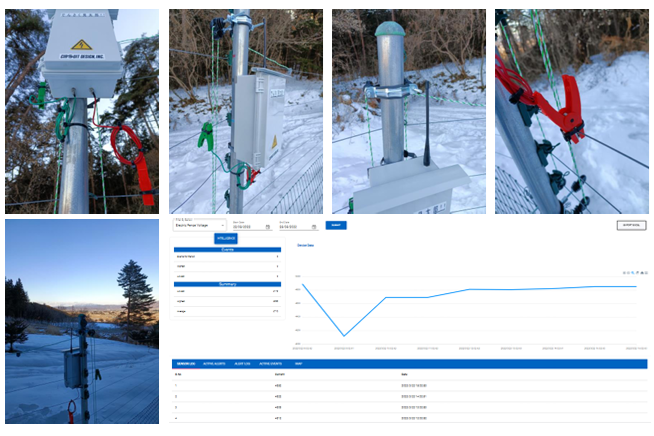
Electric fence monitoring
Security concerns
Handing over control of equipment to IoT does open up the question of security which may make people understandably resistant to using IoT. Unless data is encrypted, personal information can be left open so there are also privacy concerns. If malware can attack IoT, such devices would need periodic security updates.
Conclusion
We can see the impact that IoT will have on our everyday lives by increasing automation and convenience. In industrial applications, realtime monitoring allows quick inspection and repairs to be executed efficiently. People's health can be monitored to foresee any potential problems and prevent them.
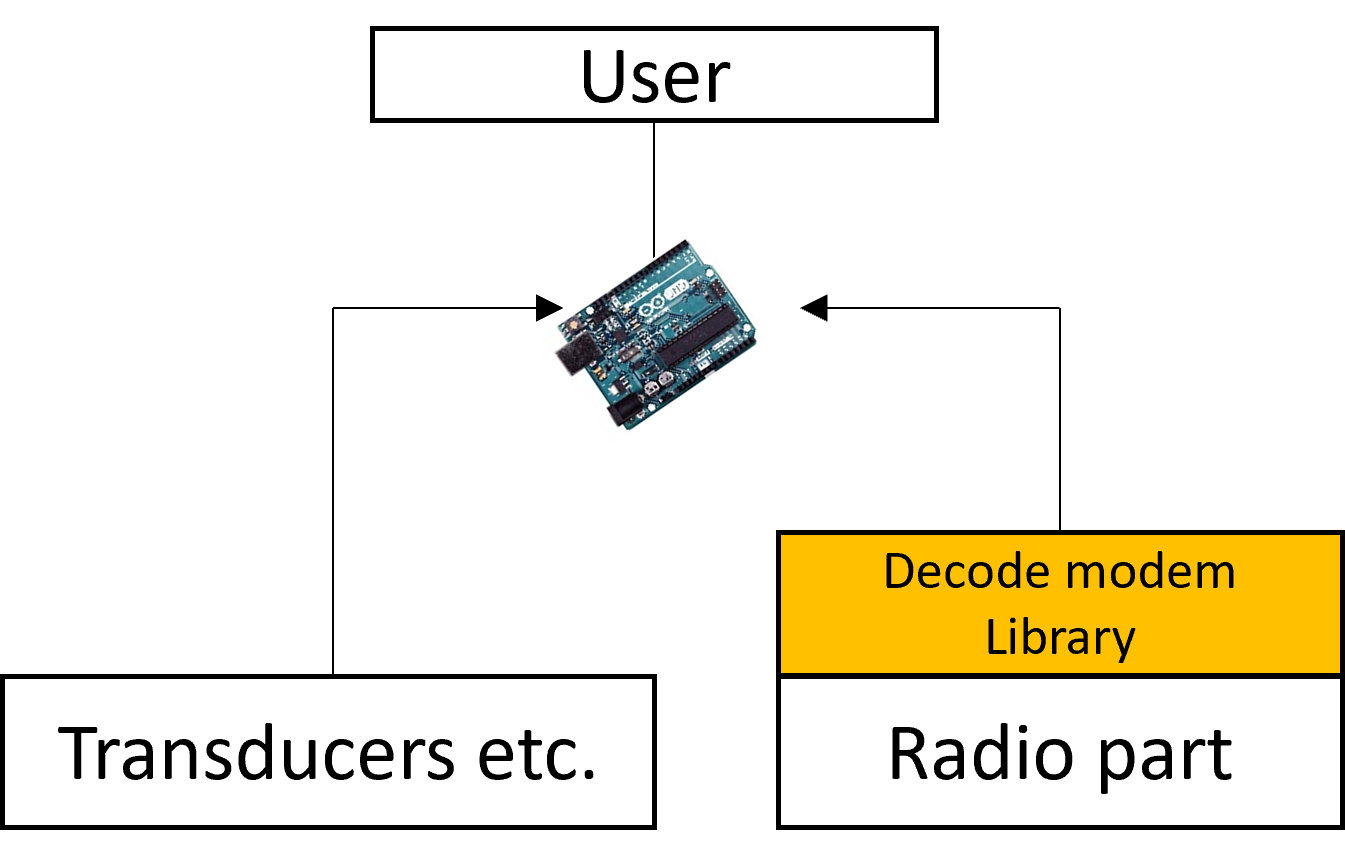 Using multiple sensors
Using multiple sensors